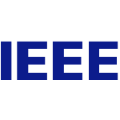This paper introduces HAAQI-Net, a non-intrusive deep learning-based music audio quality assessment model for hearing aid users. Unlike traditional methods like the Hearing Aid Audio Quality Index (HAAQI) that require intrusive reference signal comparisons, HAAQI-Net offers a more accessible and computationally efficient alternative. By utilizing a Bidirectional Long Short-Term Memory (BLSTM) architecture with attention mechanisms and features extracted from the pre-trained BEATs model, it can predict HAAQI scores directly from music audio clips and hearing loss patterns. Experimental results demonstrate HAAQI-Net's effectiveness, achieving a Linear Correlation Coefficient (LCC) of 0.9368 , a Spearman's Rank Correlation Coefficient (SRCC) of 0.9486 , and a Mean Squared Error (MSE) of 0.0064 and inference time significantly reduces from 62.52 to 2.54 seconds. To address computational overhead, a knowledge distillation strategy was applied, reducing parameters by 75.85% and inference time by 96.46%, while maintaining strong performance (LCC: 0.9071 , SRCC: 0.9307 , MSE: 0.0091 ). To expand its capabilities, HAAQI-Net was adapted to predict subjective human scores like the Mean Opinion Score (MOS) through fine-tuning. This adaptation significantly improved prediction accuracy, validated through statistical analysis. Furthermore, the robustness of HAAQI-Net was evaluated under varying Sound Pressure Level (SPL) conditions, revealing optimal performance at a reference SPL of 65 dB, with accuracy gradually decreasing as SPL deviated from this point. The advancements in subjective score prediction, SPL robustness, and computational efficiency position HAAQI-Net as a scalable solution for music audio quality assessment in hearing aid applications, contributing to efficient and accurate models in audio signal processing and hearing aid technology.
翻译:暂无翻译




